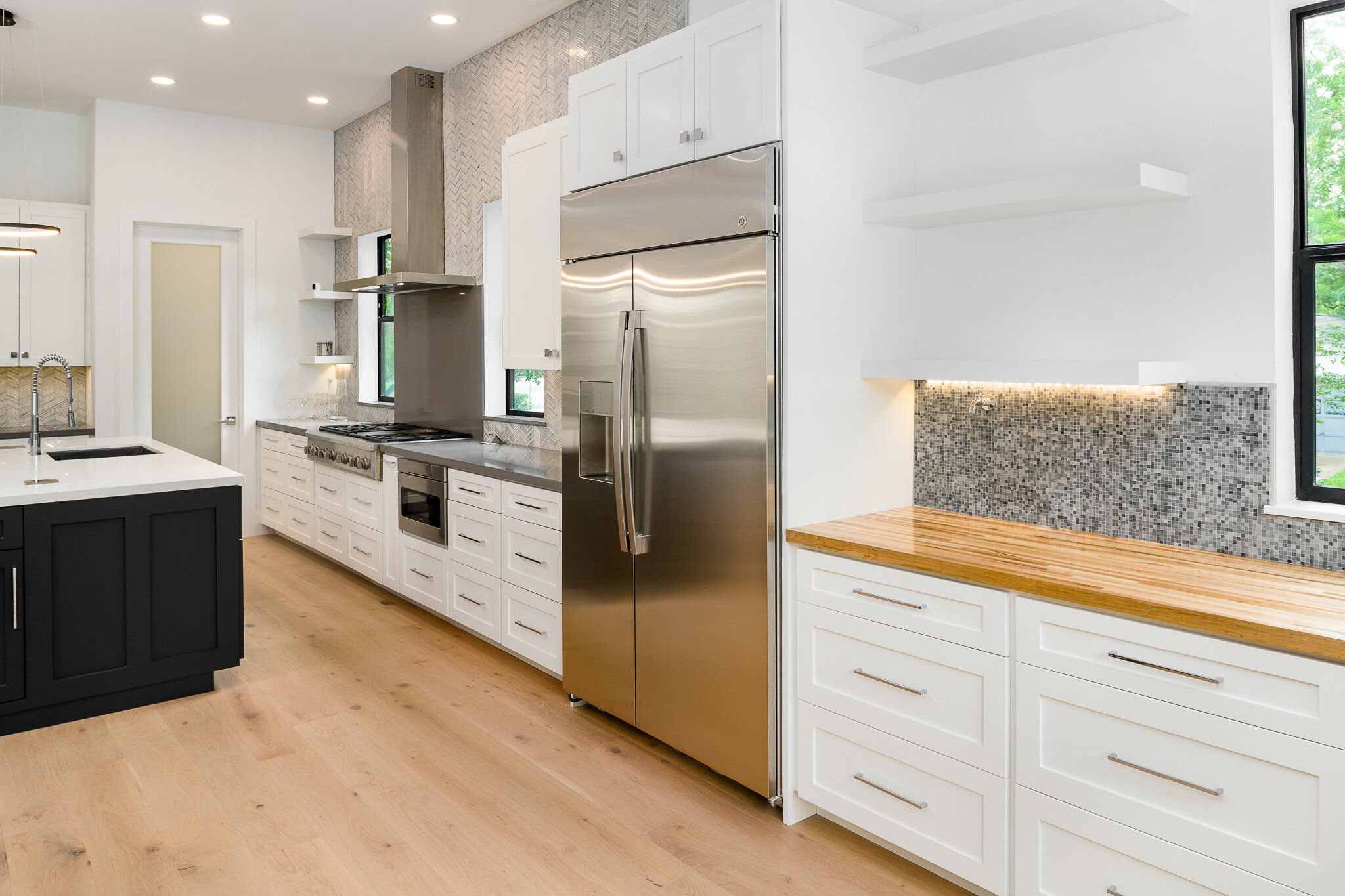Open kitchen shelving can be a great addition to your custom home kitchen, adding warmth and style to your space and making it easier to access items you use every day.
Open shelving is a trend that’s been around for years, and homeowners still love the look. Many people realize they’re cooking or using special kitchen items more often when they’re on display. They also like switching up how their kitchen looks by the season—for example, displaying mugs and soup bowls in winter and more glassware and plates in summer. When basic items are displayed, guests don’t have to ask where to find dishes, and emptying the dishwasher is easier. Some families find open shelving is ideal for family members who can’t remember to shut kitchen cabinets.
Yet, at the same time, if you fill your entire kitchen with open shelving only, your space could end up feeling cluttered and be less functional. When thinking about how to design your custom home kitchen and keep it well organized, it’s a good idea to strike a balance between open shelving and traditional cabinet space.
Configuring your space
The right mix of open shelving to cabinet space will depend on a variety of factors, including the size and shape of your room. For small or dark spaces, adding more open shelving than cabinets can make the kitchen feel bigger and brighter.
Generally, a good balance is to have 20-30% of your kitchen as open shelving and the rest as traditional cabinets. Shelving works well, especially, in narrow parts of the kitchen or spots where cabinet doors would bump into each other.
Open shelves can be dedicated to beautiful items you want to display, while cabinet space can be left to older, clunkier items. Some homeowners choose a focal point in the kitchen to dedicate to open shelving, while creating cabinets in all other areas.
In recent years, using open kitchen shelving where top cabinets would normally go has become a popular trend since it gives the room a more open feel. Homeowners also like to use open shelving above their kitchen sink—where cups can be stored—and near the stove—where spices and pantry staples can be displayed in clear jars.
Other popular items to store on open shelving in the kitchen include everyday plates and bowls, mugs, mixing bowls, and even small appliances. Some homeowners like to add cookbooks, vases or potted plants to add interesting visual elements to the room.
For lower kitchen cabinets, most people prefer to keep them closed off. However, adding in some open shelving on a kitchen island can be an attractive accent.
When you’re deciding on the right balance of open kitchen shelving and cabinets, keep the following three considerations mind:
1) Take a kitchen inventory. Think about every item in your kitchen. You may even want to make a list to make it easier to visualize. Which items would you want to display, and which would you prefer to hide away. What’s that ratio like? Remember that you can pack more into closed cabinets since they offer better support and they’re out of sight.
2) Think about pets. If you have curious, agile cats, for example, storing your best China on a lower hanging—or even a higher—open shelf could be problematic. Pet hair or dander from both cats and dogs is also more likely to collect on items that are stored out in the open.
3) Plan for extra cleaning. Dishes and other items stored on open kitchen shelves can not only collect pet hair and dander, but also dust and even grease from cooking. If you’re planning to store everyday items on your open shelves, extra cleaning should be minimal. However, if you’re storing less frequently used items, you’ll want to dust or wipe them down regularly. Dishes that have been splattered with grease could require some extra cleaning.
After considering these factors, if you’re still not quite sure about the right balance of open shelving to cabinets for your custom home kitchen, at Arieli, we can help. We work with our team of architects and designers to come up with a plan that’s perfect for your custom space and your unique needs and budget considerations.
If you’re renovating your current home, a great way to experiment with open kitchen shelving before taking the plunge is to remove existing cabinet doors for a couple weeks. Then, see how you like the new aesthetic. If you like the look, and you can keep your space looking sleek and uncluttered, then you can permanently convert some of your cabinets to open shelving.





